Build Rome
-
Thanks, Csaba.
I've been using the plug ins for backfaces and mirroring that you gave me, and they are very useful. Of course I built only half and then mirrored. I am still trying to figure out exactly how components and groups work, I promise I'll take my time and go through the tutorials again ... -
Here is a more than an hour presentation about groups and components (SketchUp 3D BaseCamp video from 2008). I would suggest it not even to "newbies" but everyone.
YouTube - Hooray for Groups and Components
[flash=640,380:m3diuzzb]http://www.youtube.com/v/Au5VhCoLVE8?fs=1&hl=hu_HU[/flash:m3diuzzb] -
Thanks, I'll look at it. Here goes a version with components, at least for the front columns ...
-
Yes, much better.
As for progressing, I would even group elements together (like the walls, roof etc. of one particular building etc.) With such models growing, this can help with organising/managing the whole model.
-
Marco, you can also try and place some simple textures on your model, rather than an all white look, it makes it easier to understand what are walls roofs or floors, and with the correct texturing even some very simple models can look deceivingly complex.
Are you going to include the Neronian structures of the Domus Aurea on the Palatine Hill, like the recently found rotating room mentioned by Suetonius? Is this structure aligned with the center of the Atrium later the temple of Venus and Rome?
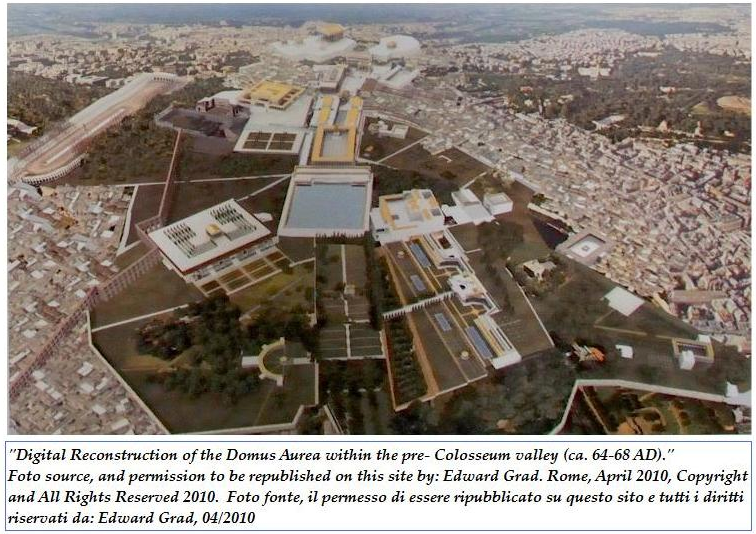
-
Hi Pedro,
Long time no see (or have you been just lurking lately?)
-
Hi, the image you post is from two bright young fellows, coordinated by prof. Viscogliosi, with whom we did some things a couple of years ago. They are good with interiors, and did a great job with the Claudianus, but the general view is not up to standard. The acqueduct jutting from the Domus Aurea is out of place, for instance.
We are trying to get our hands on the plans of the round room, I don't have them yet. As for textures, I am thinking about that, but what I have in mind is mainly the sequence, the evolution of the area through time: one scene with the situation before the fire of 64 aD, second scene Nero, third scene Flavians and so on, so that you can see how things change through time. And I think that with a dinamic vision like that a neutral color works better, not sure though ... -
Hi Elysium,
I visited Monumental Heart of Rome and I am impressed. Could have spared some work had I seen it before. Are you going on with it? Are you an archeologist too? And where from? -
Been working on the flavian situation of the Vigna Barberini. It has been much more messy than I thought. Working on two different axes is hell ...
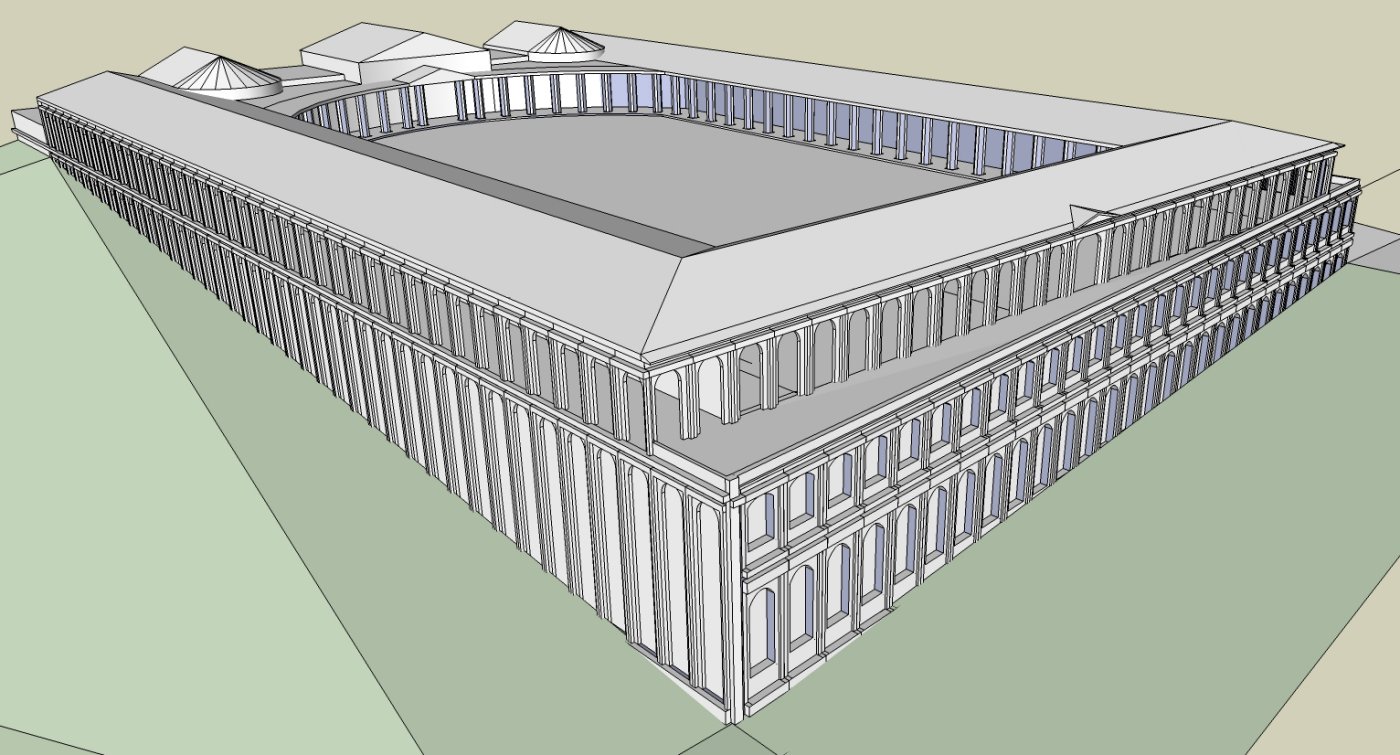
-
Csaba,
Thanks for posting that video. Don't think I've spent a more educational hour plus on SU than with that video.As an amateur enthusiast of Roman History, I've really enjoyed this whole thread and hope that it continues on. In my reading of Roman History, as well as historical fiction on the subject, I've always been amazed at the amount of razing of old buildings and replacement of them with new stuff. I guess the rubble of the razed stuff would tend to change the lay of the land, so to speak.
-
Hi Sawduster,
I'll try to go on with the thread, and thanks to Csaba's advice I am getting a bit more comfortable with SU.
Don't think the romans where that whimsy. Their keyword was "renovatio", renewal. For an emperor, or any other important person, the renovation of a building of the past was much more important than building a new one. It connected him to a great name of the past, gave him status. So even if the old building was a shack, and the new one a marble palace, he would still claim he had renovated the old historical building. Buildings lasted centuries, with minor changes. The period from 64 aD and 80 aD was the great exception. In 64 the fire destroyed most of Rome. Nero rebuilt it anew, with new urban planning rules. With the rubble from the fire he elevated the ground in what is now the Coliseum square for about 4,5 meters, and created a lake at the center with its bottom at about the previous ground level. Then the Flavians came and tried to erase the memory of Nero, built the Coliseum and the rest. But even the Flavians kept most of Nero's architectures, renaming them and changing them here and there. And again what they built lasted for centuries, a lot of it is still there. -
This was the first Meta Sudans, the fountain that was destroyed by the fire of aD 64, about 6 meters below present floor level. A good amount of it was found during the excavations. The small templet at its side is a compitum. Only the base was found, so its elevation is a matter of speculation
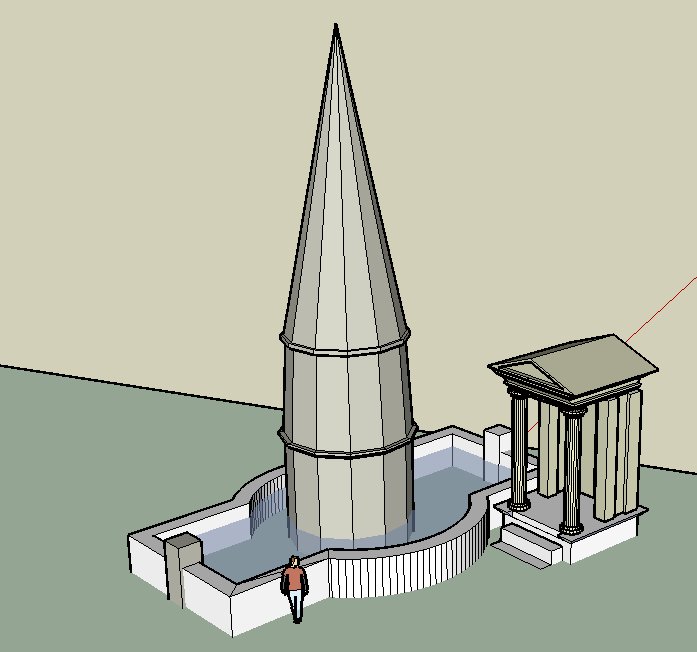
-
Tried my hand at Trajan's termae. Not quite satisfactory, but for the time being that's it.
The problem I am facing is that, after speaking with a german researcher, he convinced me that what I posted as the Oppio wing of the Domus Aurea, is just the basis villae, and that the main building was on top and back, having being completely razed by Trajan when he built his termae. So I'll have to try my hand at a work of pure imagination, since practically no evidence exists of what this main building looked like ...
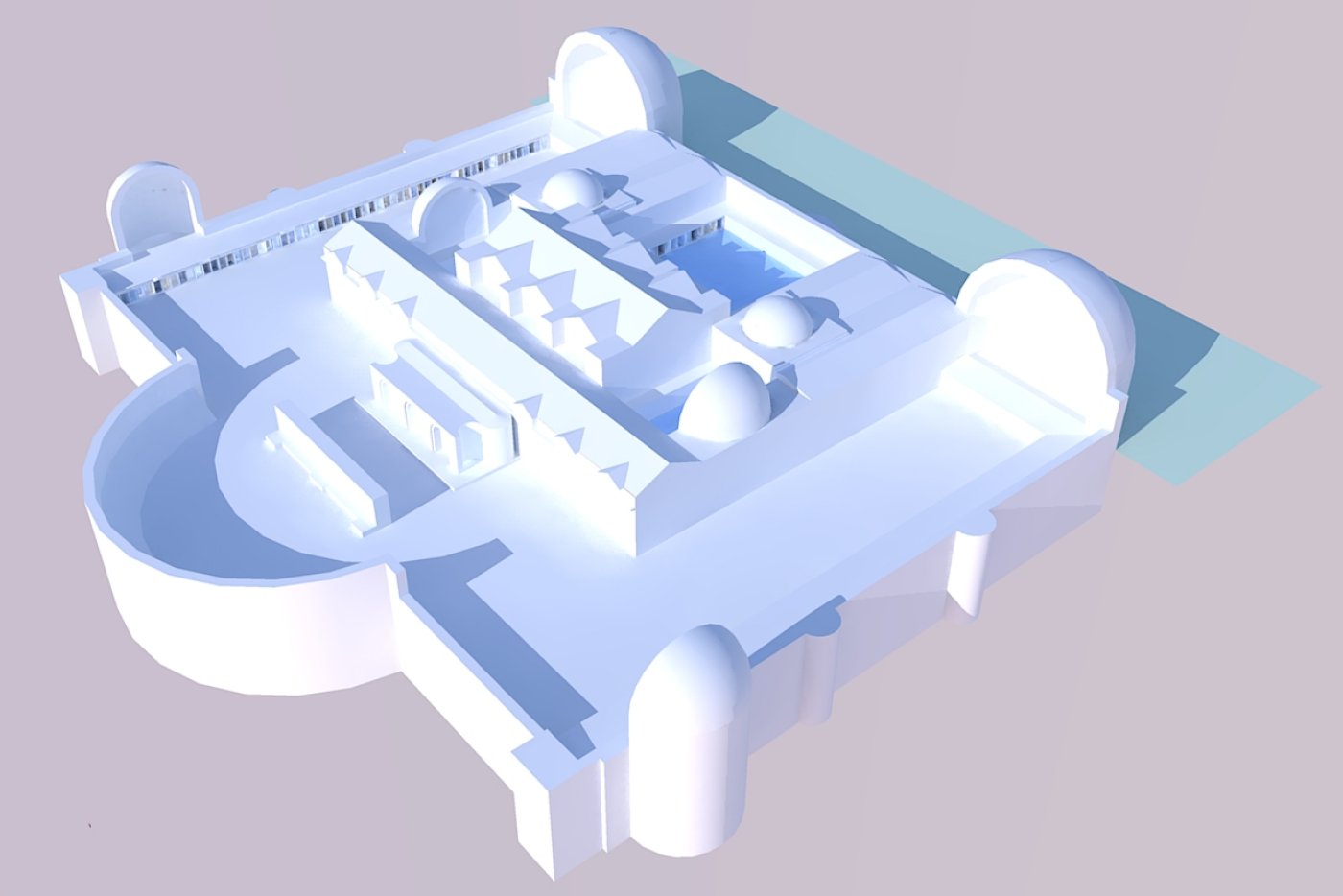
-
Looks cool to me.
As for imagination instead of facts - you need to decide what you want to do. Reconstruct or visualize (and give a clue how it may have looked).
Maybe you could make some distinction between the "probable" and "possible" reconstructions with basic colours or something.
-
I've thought about that, but it's tricky. I think I'll end up by making several projects, and some animations, mixing SU and Poser, maybe Bryce or Kerkithea, inserting some photo and movie scenes of the real thing and excavations etc.
I attach my first try at a sequence, it will get much more complex as it goes. Any advice welcome.
One thing. Is there a way to color lines, or that's possible only for faces?
And is there a way to freeze the project, so that who looks at it can change scenes, zoom pan and rotate, but not modify or edit the objects?
Thanks again
-
@hepf said:
One thing. Is there a way to color lines, or that's possible only for faces?
Window > Styles > In model (the small house icon) > Edit > Edge settings > Color (at the bottom) > Color by material
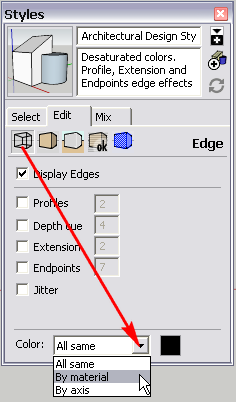
@hepf said:And is there a way to freeze the project, so that who looks at it can change scenes, zoom pan and rotate, but not modify or edit the objects?
Not in SketchUp. There are third party apps you can export the model - like 3DVIA for instance. Then people can see it online. There you can define if others can download your model (i.e. get access to the model itself) or it is only for viewing.
-
Thanks, Csaba. The hint on the lines was very useful. For the other thing, I found that there is a free SU viewer, that is exactly what I was looking for. Very user friendly browser that doesn't allow the user to access or alter the model.
I attach my experiment in architectural imagination. Opinions are welcome and sought for. The two forward branches are real, or at least the french of the academy thought so, there are some evidences from the excavations too. And the large pond at the back of the basis villae is real too. All the rest, the main building, is an invention, no evidences exist. For the round towers I took some ideas from Krause's reconstruction of Villa Jovis, in Capri ...

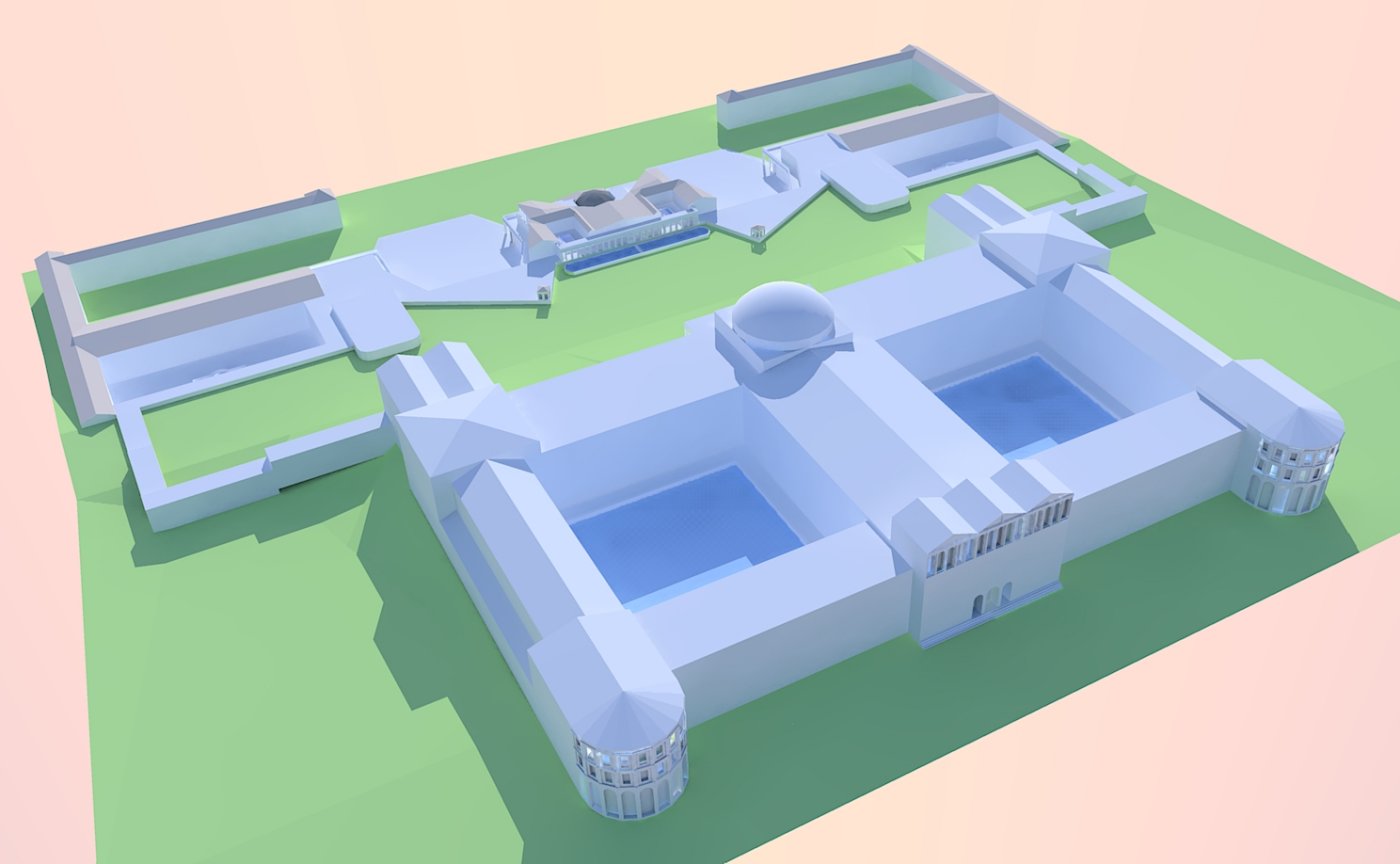
-
Definitely looks good - only be extra careful with any additional, "imaginary" stuff. That can be the most questionable part of the whole reconstruction and you can get the most critiques on those.
-
Hi Marco.
Your work is looking great!
How did your german friend convinced you that the main part of the villa was in the oppio hill?
There are some structures north of the bath that have the same orientation has the domus aurea, but i always thought it made more sense to think that the main building was in the palatine, and the recent find of the rotating room near the temple of heliogabalus seemed to confirm this. With the damnatio memoriae on Nero, the first thing to be destroyed would be the heart of the Domus Aurea, and trying to further erase his memory the Flavian emperors, built the Domus Flavia over it. It seems more likely rather than the Domus Aurea being abandoned for 40 years until Trajan built his baths.
What do you think?
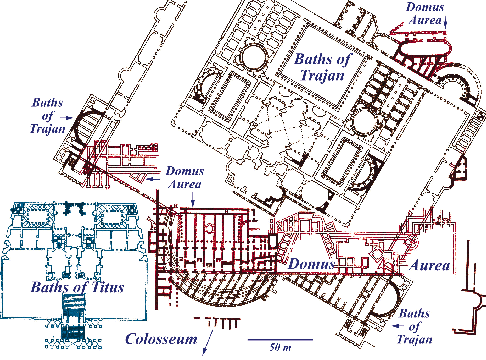
-
You are both right, but I didn't mean the overall main building, if there was one, but the main body of the Oppio wing. I arrived at the same conclusions as Elysium, and here is the result. The back line of the building is pretty certain, because there is another house of Nero's era across the street.
As for the rotating room, it has been placed everywhere, and I am not yet sure that what they found was the real one. It's an impressive find, but it's difficult to decide what it really is. What they say was proof of the existence of ball bearings is rubbish ...
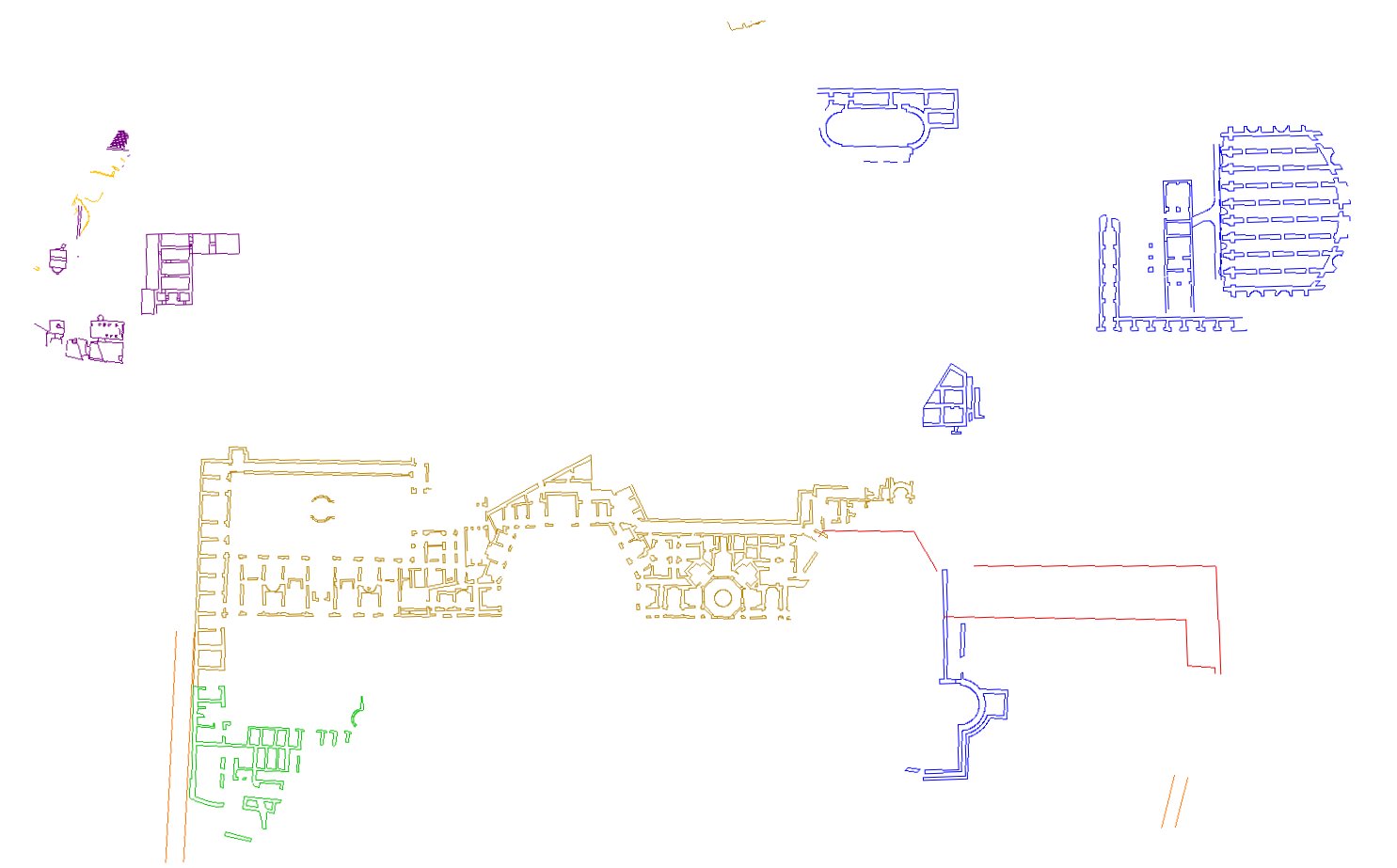
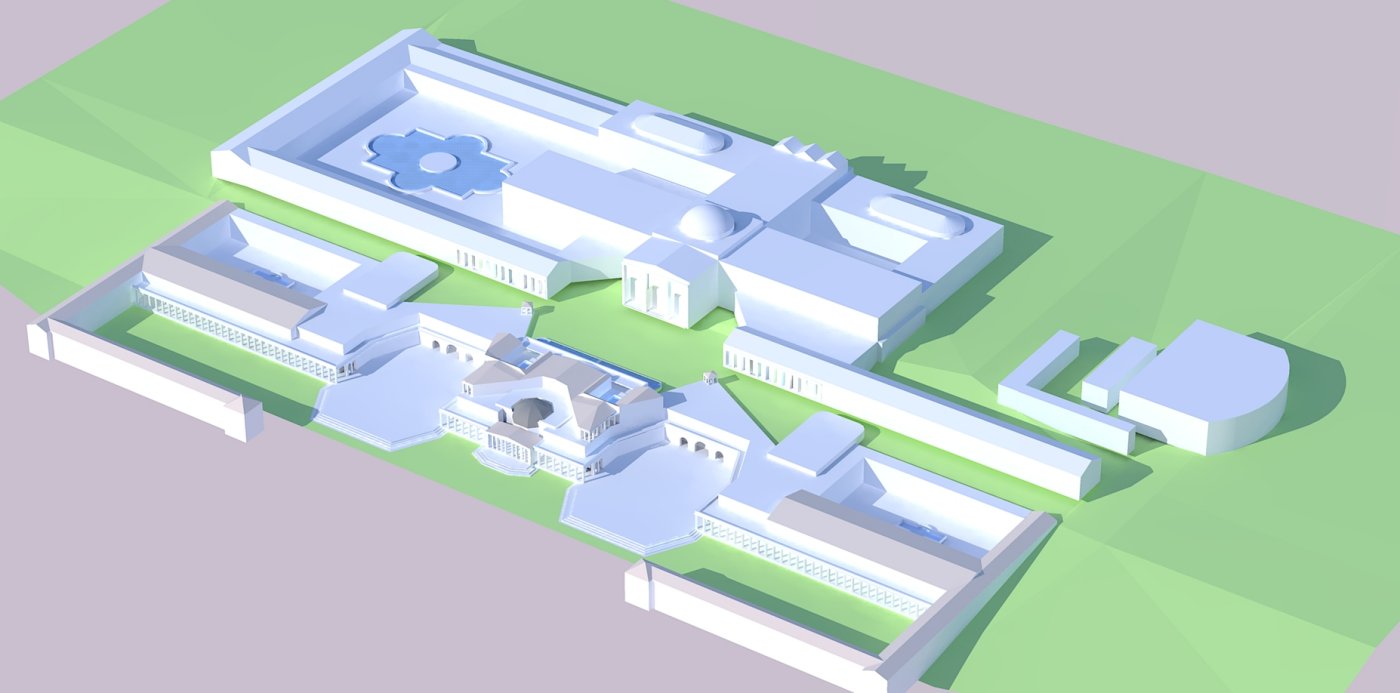
Advertisement







